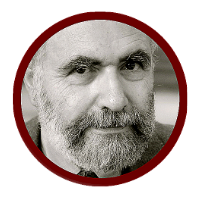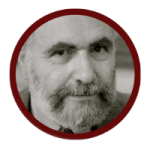A smaller and more divided Jewish people ?
I can think of two authors who discerned the future with stunning accuracy. One is Jan Gotlib Bloch, aka Ivan de Bloch, a Polish banker and peace activist, who foretold in Is War Impossible? (a book first published in French in 1898) the chain reaction that was to take place in 1914: a global European war turning into a lethal stalemate, social upheaval, and revolution. Another one is the French right-wing historian Jacques Bainville, who predicted in Les Conséquences politiques de la paix (The Political Consequences of the Peace), an essay published in 1920, why and how the Versailles treaty would lead to a second world war one generation later.
The key to both Bloch's and Bainville's effectiveness was that in order to understand how the world might turn in the ensuing years or decades, they devoted much attention to the world as it was in their own time. If we are to apply a similar approach to Jewish life in the coming 50 years, either in America, Israel, or elsewhere, we would be well advised not to ignore some crucial changes that are already under way—especially in the interlinked matters of demography and lifestyle.
In 1939, the population of the world was 1.6 billion, and there were about 17 million Jews: In other terms, Jews accounted for approximately 1 percent of the entire human population. In 1970, 25 years after World War II and the Holocaust, the world population was 3.6 billion and the Jewish population over 12 million: Jews accounted for 0.3 percent only. Today, the world population is estimated at 7.5 billion, and the Jewish population is at 16 million at best: The ratio is only 0.2 percent.
The demographic decline is even more marked in Europe and North America, the two areas that, until now, have been both the major centers of Jewish life and the leading actors in world politics and economics. The global European population, Russia included, was 470 million in 1939, and the Jewish European population was about 10 million: Jews thus amounted to 2.1 percent. Today, the respective figures are 740 million and 1.5 million: The ratio is 0.2 percent. In the United States, where the global population doubled, from 133 million in 1939 to 320 million today, the Jewish population seems to have remained almost at the same level, from 5 million then to about 6 million today: Jews dropped from 3 percent of the American population to less than 2 percent.
Indeed, the spectacular demographic rise of Israeli Jewry, from 600,000 in 1948 to more than 6 million today, has compensated in some ways for the decline elsewhere. On the other hand, much of Israel's strength and resilience has derived, to this day, from the strength and resilience of the Jewish elites in the West, above all in the United States. It is not clear whether Jewish life in the Diaspora, and Jewish American support for Israel, are sustainable in a dwindling demographic environment.
Which brings us to the even more far-reaching issue of Jewish identity and lifestyle. The Jewish people are currently splitting into sub-currents that have less and less in common. According to a 2013 Pew survey, 9 million adult Americans claim a Jewish heritage, but only a bit more than one half of them (5.3 million) fully identify as Jews, and an even smaller group (4.2 million) identify as Jewish by religion. Then the latter group splits again between a Reform-Conservative majority (about 80 percent of the religious affiliated American Jews) and a small but growing Orthodox minority (20 percent).
According to a 2015 Pew survey, there is a sharp divide between Orthodox and non-Orthodox American Jews on almost every issue, including the actual practice of religion, support for Israel, and American politics. The main difference, however, is in intermarriage. Among the Orthodox, it is still an exception. Among the non-Orthodox, it tends to be the rule. Since only 20 percent of the intermarried Jews are raising their children in the Jewish religion, one wonders whether American Judaism as we know it today is not going to collapse and vanish, to be replaced by a much smaller but much more Orthodox Judaism. Some Orthodox Jews may see it as a blessing in disguise. The overall loss for Jewish life could, however, be unfathomable.
On the face of it, the situation is much more secure in Israel. Most Israeli Jews take their religious affiliation for granted, and one Israeli Jew out of two is following an Orthodox or semi-Orthodox lifestyle. Intermarriage in Israel is low and confined, more often than not, to marriage with Russian Israelis of patrilineal Jewish descent.
But things are actually more complex. If the old divide between secular and religious Israelis tends to recede, new divides are emerging among the Orthodox, between non-Zionist Haredim and Zionist Orthodox, and even between Haredi-leaning Zionist Orthodox and more liberal-leaning Zionist Orthodox. These developments are compounded by the growth, and the growing Israeliness and assertiveness, of non-Jewish groups in Israel—Druze, Israeli Arabs, non-Jewish Asian or African immigrants, non-Jewish Russian immigrants—who by now amount to more than 20 percent of the 8.3 million Israeli citizens.
It is not unlikely at all that Jewish and non-Jewish subgroups in Israel will enter into strange new alignments in the coming decades. Some Haredim are considering a complete secession from the present Israeli society and tactical alliances with the Israeli Arabs. Naftali Bennett's Jewish Home Party is explicitly advocating a closer alliance between religious and secular Zionists, but he is also supporting a more thorough integration and Hebraization of the Israeli Arabs. The center and left parties think of even more diverse coalitions.
Indeed, trends can be adjusted or reversed. And the Jewish people have usually been very good at that. Still, one should heed some warnings.
© Michel Gurfinkiel & Commentary, 2015
Michel Gurfinkiel, a Shillman-Ginsburg Fellow at the Middle East Forum, is the Founder and President of the Jean-Jacques Rousseau Institute, a conservative think thank in France.


